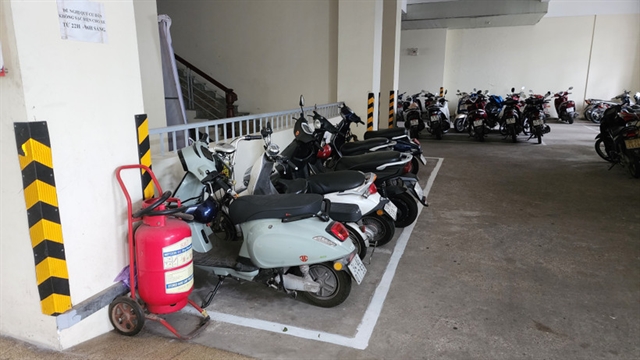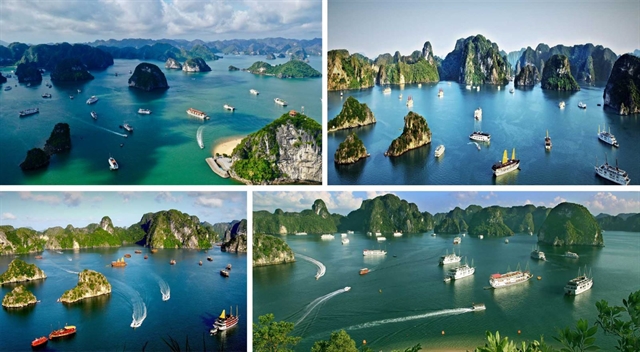 Opinion
Opinion

 |
| Hạ Long Bay, a UNESCO Heritage Site in Quảng Ninh Province. The bay is always one of the best attractions for visitors from across the country and the world. Photo baotintuc.vn |
Sea and island tourism has been developed as a key sector, but there remain some shortcomings. Việt Nam News speaks with Nguyễn Thị Song Hà, Associate Professor, PhD, from Việt Nam Academy of Social Sciences about solutions for the sector to effectively develop.
 |
| Nguyễn Thị Song Hà, PhD, from the Việt Nam Academy of Social Sciences. Photo courtesy of the expert. |
Could you evaluate the potential that Việt Nam has to boost sea and island tourism?
With its long coastline, vast sea areas, and numerous islands, Việt Nam holds tremendous potential to develop marine and island tourism – not only as a pillar of the tourism industry but also as a driver for other economic sectors to create jobs, contribute to poverty reduction, and preserve cultural heritage in many coastal areas across the country.
The country's sea and island resources are rich and diverse, including natural marine, island and human resources. Therefore, developing relevant tourism is considered an important task, contributing to making tourism a spearhead economic sector.
With a coastline of over 3,260km and nearly 3,000 large and small islands, Việt Nam's seas and islands have a particularly important position in national defence and security strategy.
Beaches are beautiful with soft sand and clear blue water evenly distributed from north to south, from Móng Cái to Hà Tiên, with a series of beaches that have become famous tourist destinations.
 |
| An aerial view of the sea off Hòn Thơm Island in the southern province of Kiên Giang. Photo vietnamtourism.gov.vn |
Along with the long coastline, the country has a rich system of islands and bays stretching from Quảng Ninh Province in the North and Kiên Giang Province in the South with many renowned landscapes.
However, in several localities, development remains limited. Untapped potential persists, and competitiveness is relatively low.
In those localities, exploitation is still spontaneous, fragmented and uneven. The infrastructure system has not been invested in compatibly, while tourism products and services are still poor and degraded. Promotion and advertising for tourism activities are still weak and there is a lack of high-quality personnel.
Many local authorities have not paid due attention to investing in the development of sea and island tourism as a way to solve employment and increase livelihoods and income for local people.
Furthermore, in some areas, conflicts sometimes still occur between different economic sectors during exploitation, causing environmental consequences and the risk of ineffective development.
With the goal of developing sea and island tourism, accounting for an increasingly high proportion in the GDP structure, the tourism industry should quickly overcome limitations and become more professional.
"Sea and island tourism accounts for about 70 per cent of Việt Nam's tourism."
Sea and island tourism currently contributes approximately 70 per cent of Việt Nam's overall tourism activities. How can the sector increasingly assert its position in the domestic and international market?
Sea and island tourism activities have since 2023 accounted for about 70 per cent of the country's tourism industry.
During 2010-19, the number of visitors to coastal localities increased remarkably, at 13.6 per cent annually for foreign visitors. Many destinations have become attractive for domestic and international tourists, such as Hạ Long Bay, Lan Hạ Bay and Cát Bà Island.
If before 2010, foreign tourists were mostly from the former Soviet Union and Eastern European countries, now they come from such diverse markets as China, South Korea, Australia and New Zealand, ASEAN nations, France, Germany and others in Europe, and North America.
Sea and island tourism activities have been strengthened in recent years. Việt Nam has actively diversified tourism products to encourage development of the whole sector and create momentum for economic growth in the localities that have foremost tourist destinations, as well as the whole national economy.
This development has also helped gradually improve local income and welfare of coastal communities, stimulate the infrastructure construction and technical facilities and strongly change the social economy in coastal areas.
The industry has focused on diversifying related products as a lever for boosting local sea tourism. Could you give some examples of this?
The Vietnamese tourism industry has focused on exploiting and developing multiple sea and island products to lure more visitors to Việt Nam, among them tours to UNESCO heritage sites in coastal areas. This type of product has attracted a large number of domestic and foreign tourists.
Tours to historical and cultural heritage sites in coastal localities are also among the top choices because they are simple to set up, do not require much investment, and can attract local people to participate in.
Sightseeing is also popular for tourists to pick up when they book tours to coastal areas. According to the Việt Nam National Administration of Tourism and the Institute for Tourism Development Research, the most attractive tourism products are sightseeing tours to top destinations such as Cô Tô Island and Hạ Long Bay in Quảng Ninh, Lăng Cô in Thừa Thiên Huế, Sơn Trà Peninsula in Đà Nẵng, Nha Trang in Khánh Hòa, and Vĩnh Hy Bay in Ninh Thuận.
What should local authorities, communities and businesses pay attention to in order to encourage progress?
Along with the managing and operating role of the State and Government, local authorities and travel agencies need to have measures to stimulate demand and diversify tourism products that carry the regional unique identity. They should link with other service companies, restaurants, hotels to provide promotional schemes to reduce service prices, room rates but still improve service quality for tourists.
Localities developing sea and island tourism must pay attention to investing in infrastructure and facilities at ports, moorings, and wharves and improving technical and safety conditions there.
To develop the cruise tourism industry sustainably, it is necessary to invest in building tourist ports with modern and fully equipped passenger terminals to provide the best quality services according to world standards.
Some localities with strengths in sea and island tourism and a large tourist market share should conduct studies on the feasibility of investing in building airports suitable for conditions on the islands, connecting Vietnamese islands with the mainland and the world.
Relevant tourism products should be managed ensuring the protection of the local environment and ecosystem, especially national security and sovereignty over the seas and islands.
The State should support development links among related enterprises and between them with other business groups in other sectors such as fisheries, aquaculture, offshore fishing and various maritime services.
While developing such tourism and exploiting resorts, entertainment, discovery and sports services, local authorities and businesses must also pay attention to ensuring ecosystem protection, minimising environmental pollution.
What strategic orientations should Việt Nam's sea and island tourism have to keep up with various trends, while ensuring national sovereignty?
To sustainably develop sea and island tourism in line with its vast potential, and to address long-standing limitations, a strategic focus on several key solutions is essential.
First of all, a strategy is needed for developing green tourism associated with an economy that is suitable to local specific conditions, creating adequate electricity and clean water sources to supply destinations, and paying attention to renewable energy, with the ability to adapt and cope with climate change.
A master plan was issued by the tourism authority for Việt Nam's tourism development, with a vision to 2030. And as unveiled in 2019, the 2030 Marine Strategy emphasised the sustainable development of the marine economy on the basis of green growth, biodiversity conservation and marine ecosystems, while ensuring harmony between economic and natural ecosystems, and between conservation and development. VNS




